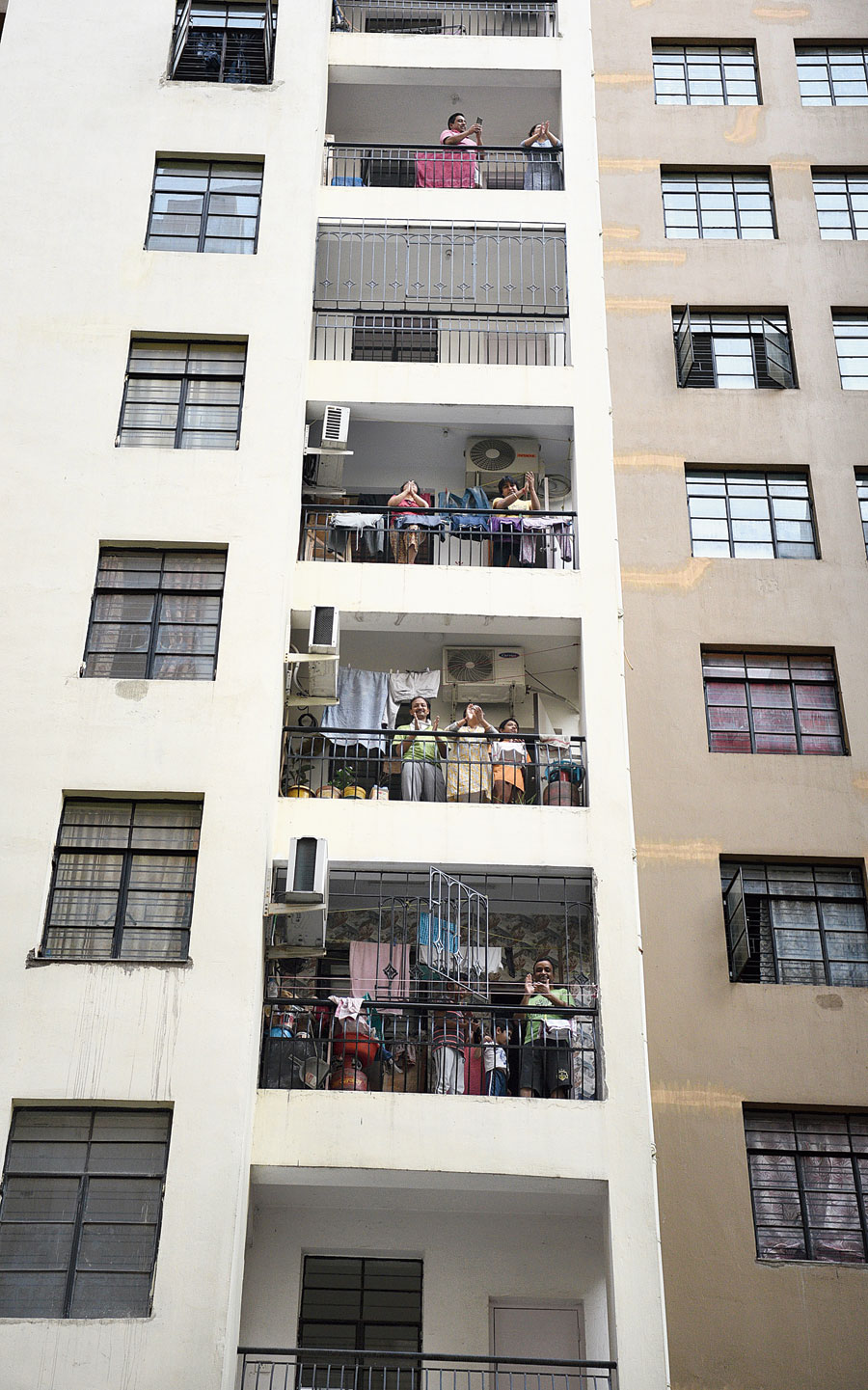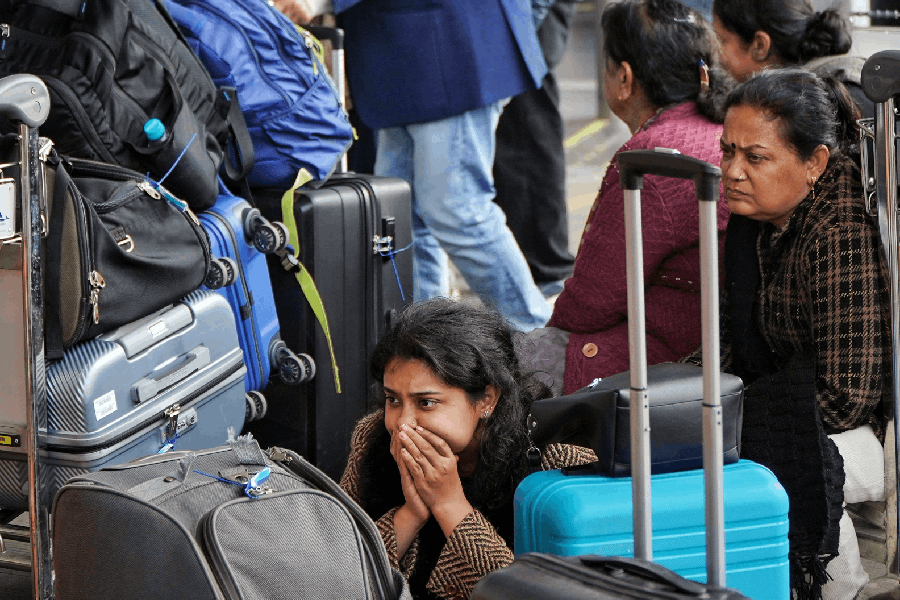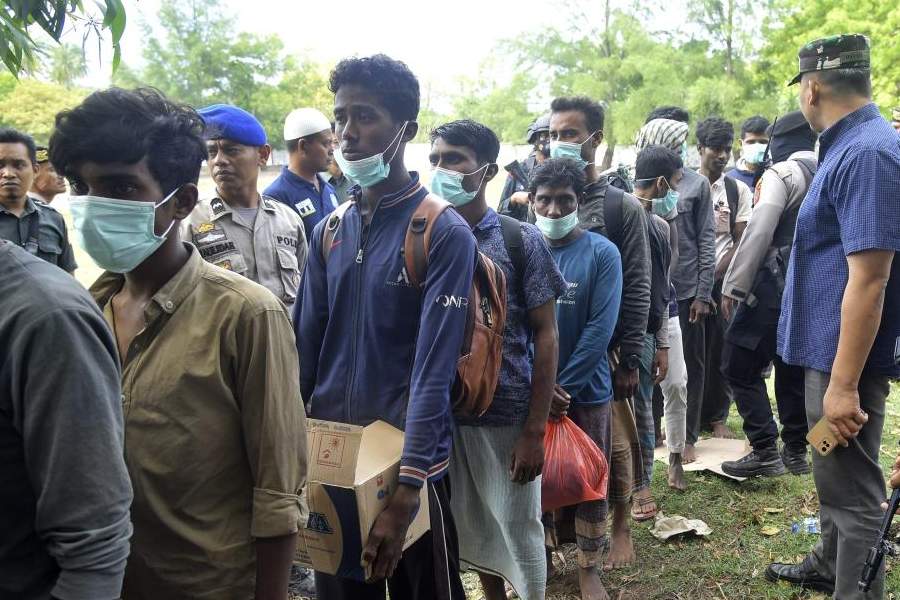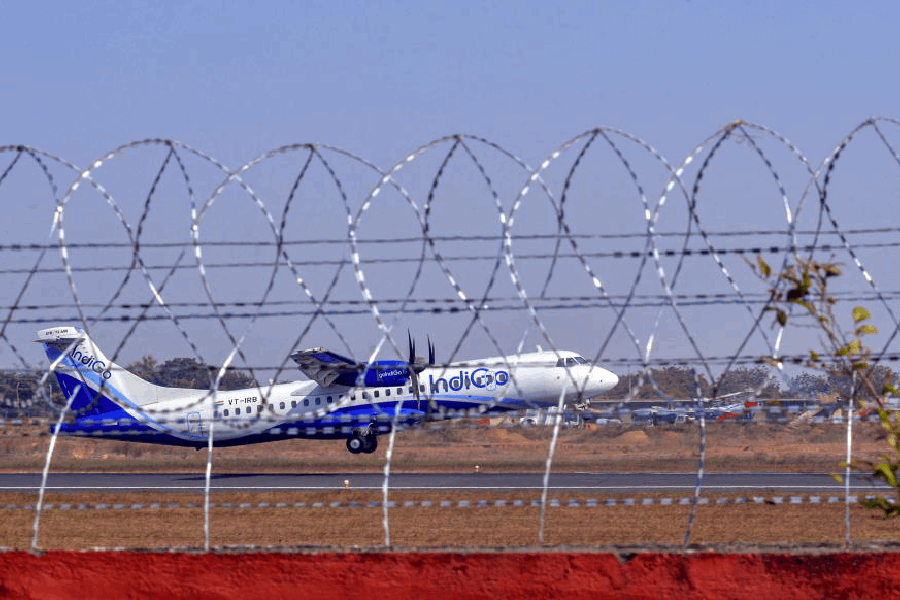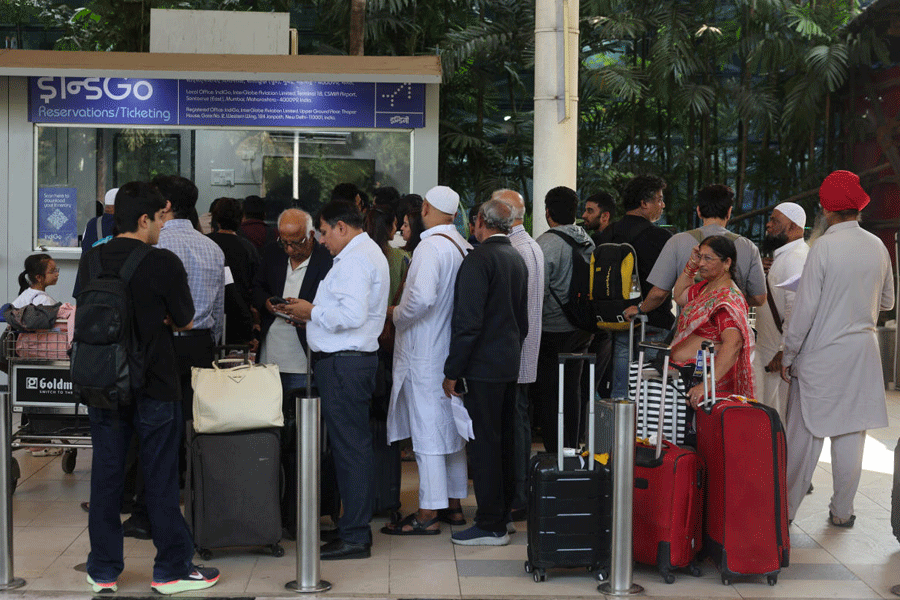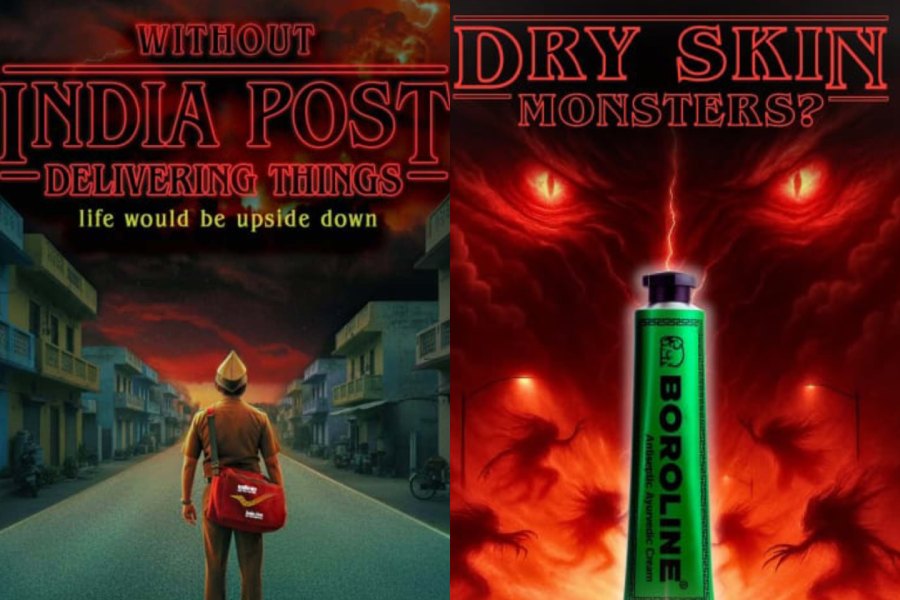The city stayed mostly indoors throughout Sunday, responding to Prime Minister Narendra Modi’s “Janata Curfew” call to combat the spread of Covid-19.
The only time the decibel level went up was after 5pm, when thousands of people came out on their balconies and terraces to blow conch shells, beat utensils and clap together to support doctors, nurses and other emergency services providers in the wake of the threat posed by the coronavirus.
Markets were shut, malls were closed and the neighbourhood clubs, tea stalls and other usual adda spots were also closed or deserted. The Maidan area, usually bustling on Sunday morning, was empty.
From BK Paul Avenue in the north to Diamond Harbour Road in the south, major thoroughfares were deserted throughout the day.
Only a handful of government buses and an even lesser number of taxis, app cabs and private cars were visible on the roads. Driving from BBD Bag to New Alipore, around 10km away, took 14 minutes on Sunday morning. The usual time is over 30 minutes.
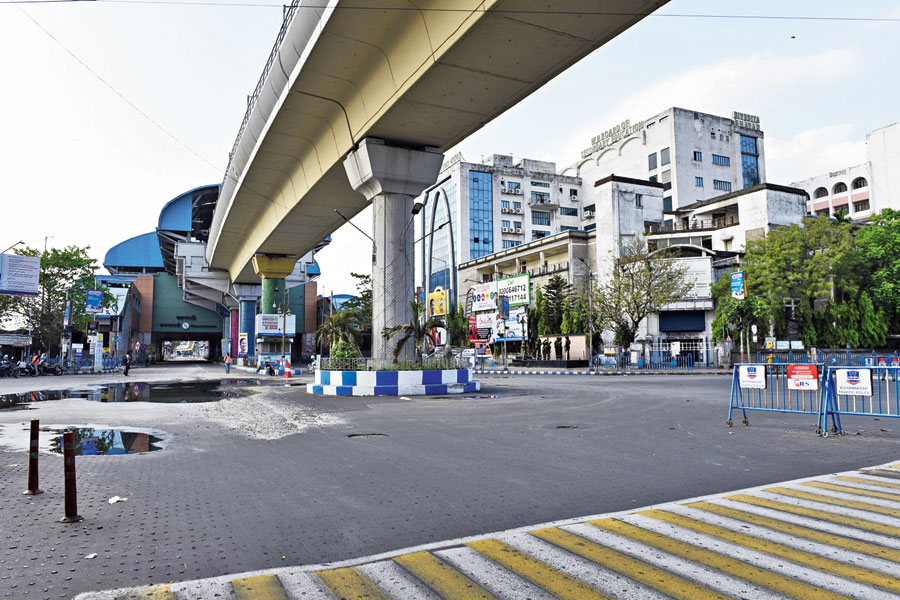
The Karunamoyee crossing around 4pm on Sunday
Around 12.30pm, the Gariahat intersection was silent. The pavements were empty. A solitary government bus was plying down Rashbehari Avenue towards the Ruby intersection. There were only two occupants on the bus that was coming from Paranasree — the driver and the conductor.
“Three passengers boarded the bus. Two of them got off at Taratala. Another got off near Deshapriya Park,” the conductor said, his face covered in a mask. Another government bus at Esplanade had only one passenger — a nurse headed towards the RG Kar Medical College and Hospital.
Almost around the same time, the only people at the Karunamoyee intersection in Salt Lake were two traffic policemen. The area usually sees heavy traffic and thousands of people throughout the day.
Calcutta mayor Firhad Hakim was spotted on Central Avenue in the morning, interacting with a team of conservancy workers. He insisted the workers had their hands and faces covered.
“These people clean the city. But they should also take care of their own health,” he said, washing his hands with a sanitiser before getting into a car. The housing complexes also wore a deserted look, with residents barely stepping out of their apartments.
WhatsApp groups came alive with discussions on the ongoing crisis on Sunday morning. “We have been discussing ways to tide over this crisis. Since we are unable to meet, we are interacting through WhatsApp,” said a homemaker living in a housing society in Narendrapur.
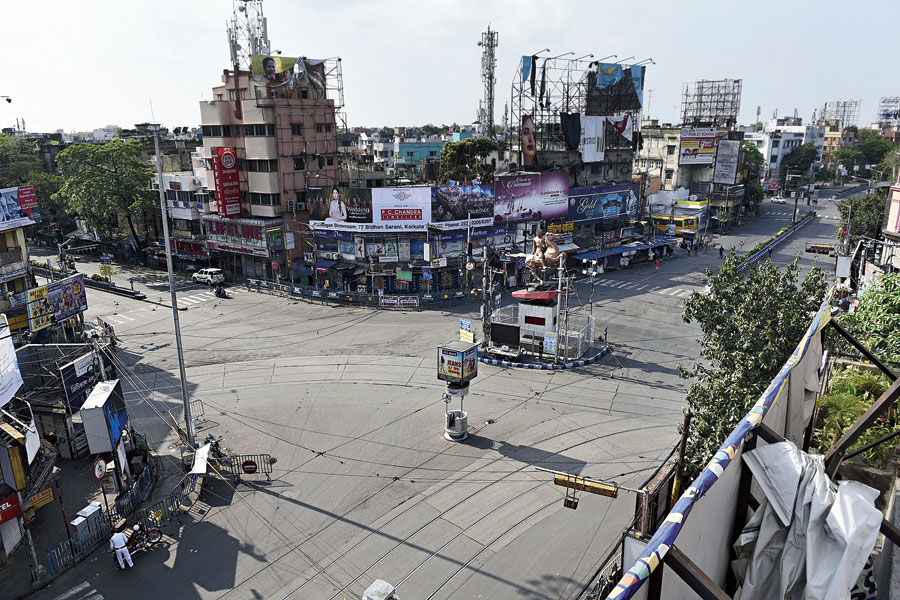
Shyambazar five-point crossing around 4.30pm
Housing estates resorted to different ways to implement the “Janata Curfew”.
One of the residential societies had prepared posters to encourage complete lockdown between 7am and 9pm, while another had issued strict instructions to ban the entry of vendors and delivery persons of online shopping portals and food apps.
“The idea is to break the chain of infection. And that can be possible only if we do not allow any vendor to enter our complex for at least 14 hours. We have discouraged movement of residents inside the complex, too. But if someone still wants to collect something ordered earlier, the person should collect it from the delivery executive at the main gate of the compound,” said a software engineer who is part of the managing committee of a south Calcutta housing complex with over 500 flats.
The scene changed as soon as the clock struck five in the evening. From residents of high-rise buildings to people living in modest one-room accommodations, people flocked to balconies and terraces. They blew conch shells, beat metal utensils and kept clapping.
Metro ran 54 trains on the north-south route, instead of the usual Sunday quota of 124 trains. But the trains were mostly empty.

